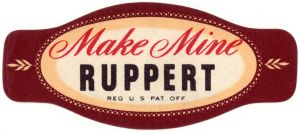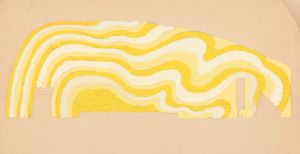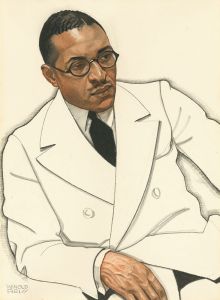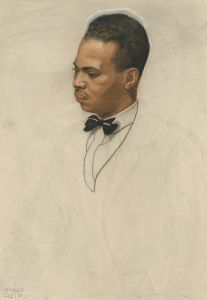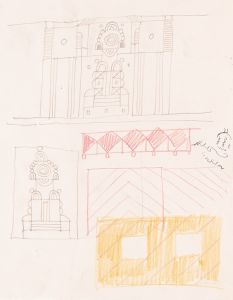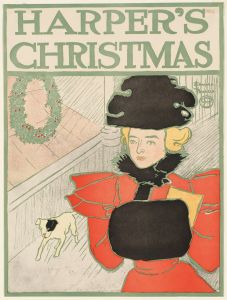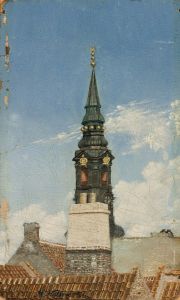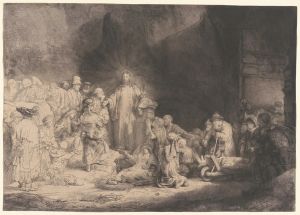
Proposed decorations for Fisher Building, Detroit.] [Bridge 1st floor.] [Bridge 2nd floor & end gallery no. 205.] [Elevator lobbies 105 & 112
A hand-painted replica of Winold Reiss’s masterpiece Proposed decorations for Fisher Building, Detroit.] [Bridge 1st floor.] [Bridge 2nd floor & end gallery no. 205.] [Elevator lobbies 105 & 112, meticulously crafted by professional artists to capture the true essence of the original. Each piece is created with museum-quality canvas and rare mineral pigments, carefully painted by experienced artists with delicate brushstrokes and rich, layered colors to perfectly recreate the texture of the original artwork. Unlike machine-printed reproductions, this hand-painted version brings the painting to life, infused with the artist’s emotions and skill in every stroke. Whether for personal collection or home decoration, it instantly elevates the artistic atmosphere of any space.
Winold Reiss was a German-American artist known for his work in interior design and his contributions to the decorative arts in the early 20th century. One of his notable projects was the proposed decorations for the Fisher Building in Detroit, Michigan. The Fisher Building, designed by architect Albert Kahn and completed in 1928, is an iconic example of Art Deco architecture and is often referred to as "Detroit's largest art object."
Reiss was commissioned to create interior decorations for several areas within the Fisher Building, including the bridge on the first and second floors, the end gallery no. 205, and the elevator lobbies 105 and 112. His work was characterized by vibrant colors, intricate patterns, and a blend of modernist and traditional elements, which were hallmarks of the Art Deco style.
The bridge areas on the first and second floors were designed to connect different parts of the building, serving both functional and aesthetic purposes. Reiss's decorations in these areas likely included murals or decorative panels that enhanced the architectural features of the building while providing visual interest for those passing through.
Gallery no. 205, located at the end of one of the building's corridors, would have been another focal point for Reiss's artistic vision. This space may have featured large-scale artworks or decorative motifs that complemented the overall design scheme of the Fisher Building, contributing to its reputation as a masterpiece of Art Deco design.
The elevator lobbies, specifically numbers 105 and 112, were also important areas for Reiss's decorative work. Elevators were a modern convenience in the 1920s, and their lobbies were often designed to impress visitors and tenants. Reiss's decorations in these spaces would have included elaborate wall treatments, possibly incorporating geometric patterns, stylized figures, or abstract designs that reflected the cutting-edge aesthetic of the time.
Winold Reiss's contributions to the Fisher Building are an example of how artists and designers collaborated with architects to create cohesive and visually stunning environments during the Art Deco period. His work in the building not only enhanced its aesthetic appeal but also demonstrated the potential for art to elevate everyday spaces into extraordinary experiences.
While specific details about the exact nature of Reiss's proposed decorations for these areas of the Fisher Building may not be extensively documented, his overall impact on the building's interior design is well-recognized. The Fisher Building remains a testament to the artistic and architectural innovation of the early 20th century, with Reiss's work playing a significant role in its enduring legacy.





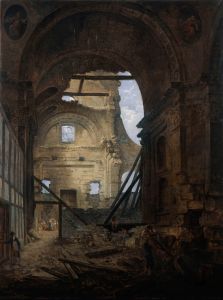
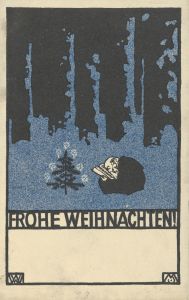
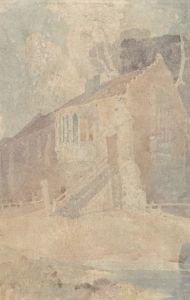
![Design drawings for Community Coffee Shops, Wilkes-Barre, PA.] [Proposed wall treatment, interior elevation color study with bosky murals](/imgs/249275/s/winold-reiss-design-drawings-for-community-coffee-shops-wilkesbarre-pa-proposed-wall-treatment-interior-elevation-color-study-with-bosky-murals-1ff2a82a.jpg)
![Designs for cover of Hotel Management Magazine.] [Blue and purple cover design](/imgs/249311/s/winold-reiss-designs-for-cover-of-hotel-management-magazine-blue-and-purple-cover-design-ed63bb83.jpg)
![Graphic textile or wallpaper designs with geometric patterns.] [Interior; mural color study, tropical theme with palm trees](/imgs/249359/s/winold-reiss-graphic-textile-or-wallpaper-designs-with-geometric-patterns-interior-mural-color-study-tropical-theme-with-palm-trees-aa2f4d5f.jpg)
